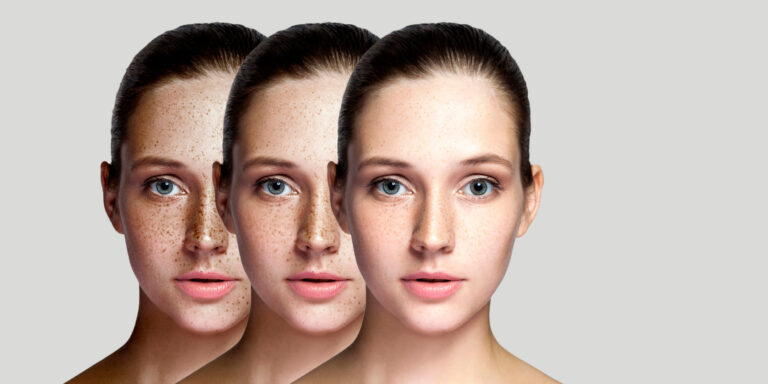A solar lentigo is a very common skin lesion that is a direct result of sun damage. Enjoying activities outside or working a job that takes you outdoors can mean hours under the sun. Over months and years, those hours add up, and the time in the sun may damage your skin. A solar lentigo is a skin conditions that can be caused by too much sunshine. To protect itself from the damaging effects of the sun, skin makes more brown pigment, called melanin. That extra melanin is what creates a suntan. But sometimes skin doesn’t make melanin evenly. As a result, the skin’s coloring, called pigmentation, looks patchy. Melanin can also collect more in one spot.
What is a Solar Lentigo?

A solar lentigo is a flat spot that is darker than the skin around it. Solar lentigines are usually tan, brown or dark brown, depending on skin color. Typically, they are darker than freckles. Solar lentigines usually have oval to round shapes with uneven edges. They can be different sizes. They tend to show up on areas most exposed to the sun, such as the head, face, hands, arms and upper body. Also called liver spots, they are common in older adults. But children with white skin who spend a lot of time in the sun also may develop solar lentigines.
With age and with more time outdoors, people tend to develop more solar lentigines. Sometimes solar lentigines appear in large numbers, as seen on the upper back in the photo below. Solar lentigines are similar to freckles. But unlike freckles, solar lentigines don’t tend to fade during colder months.
A solar lentigo on the lip: Labial Melanotic Macule
A labial lentigo is a harmless, small, flat, brown spot on the lip. It’s also called labial melanotic macule. It can appear after spending time in the sun. In most cases, labial lentigo forms on the lower lip.
Are Solar Lentigines Dangerous?
A solar lentigo isn’t contagious or cancerous.
What are the Risk Factors for Developing a Solar Lentigo?
The peak time for developing solar lentigines is after your 50s. You’re also more likely to have them if you have spent excessive time in the sun.
How do I treat a solar lentigo?
Solar Lentigines can be treated in a variety of ways in a dermatology clinic if they are noticed during your skin check. A few ways that a dermatology specialist may treat the seborrheic keratosis include:
- Liquid nitrogen
- Topical creams
- Laser Surgery
Take steps to protect your skin
You can protect your skin and minimize sun damage by taking the steps below when you’re outdoors. Follow these tips even on cool, cloudy or hazy days. Be extra careful around water, snow, concrete and sand because they reflect the sun’s rays. And keep in mind that sunlight is more intense at higher altitudes. For the most protection from the sun, cover your skin when you’re outdoors. Dark clothing with a tight weave offers more protection than light-colored clothing or clothing with a loose weave. Try outdoor gear designed for sun protection. Check the label for its ultraviolet protection factor (UPF). That tells how well a fabric blocks sunlight. The higher the UPF number, the more protection you get. Wear a wide-brimmed hat or use an umbrella to shade skin that can’t be covered, along with wearing sunscreen.
Use sunscreen often and generously. On uncovered skin, use a broad-spectrum sunscreen with a sun protection factor (SPF) of at least 30. Apply sunscreen generously. Reapply every two hours, or more often if you’re swimming or sweating.
Avoid being in the sun between 10 a.m. and 4 p.m. The sun’s rays are strongest during these hours, so try to schedule outdoor activities for other times, if possible. If you have to be outside during the middle of the day, try to limit the time you’re in the sun. Stay in the shade as much as you can.
Embark on your journey to radiant skin
If you have a solar lentigo and are looking for a dermatologist near me, Trillium Clinic Dermatology is here to help. We invite patients seeking a top rated, board-certified dermatologist near me from Chapel Hill, Carrboro, Hillsborough, Pittsboro, Mebane, Durham, Burlington, Cary, and surrounding cities. If you are worried about a solar lentigo, schedule an appointment with us at our Chapel Hill dermatology office. We will conduct a comprehensive evaluation, pursue the appropriate diagnostic tests, and explore the various treatment options available. We will create a treatment plan that is best suited for your specific needs.
Early diagnosis and appropriate management can help control symptoms, prevent complications, and improve quality of life for individuals with solar lentigines. Call us today to learn more.

